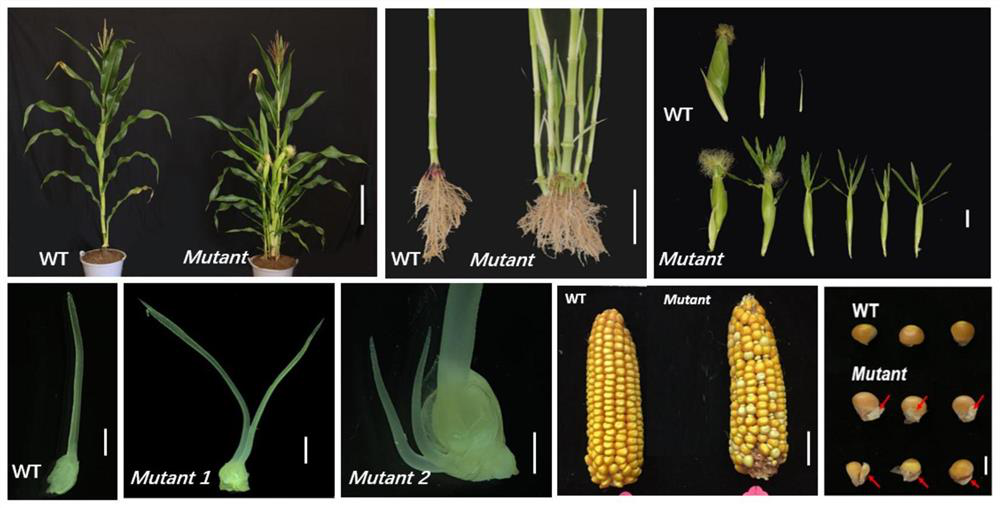Application of GT1/HB13 gene in regulation and control of non-degeneration and lodging resistance of inferior flower of corn ear
A lodging-resistant, 1.GT1 technology, applied in the field of maize genetics and breeding, can solve the problems of small number of filaments, abnormal development of floret carpel in female ears, etc.
- Summary
- Abstract
- Description
- Claims
- Application Information
AI Technical Summary
Problems solved by technology
Method used
Image
Examples
Embodiment 1
[0025] Example 1 Construction of CRISPR / Cas9 Transgenic Plants of Maize GT1 and HB13 Genes
[0026] 1. Method
[0027] The construction process of the CRISPR / Cas9 knockout vector for GT1 (SEQ ID NO: 1) and HB13 gene (SEQ ID NO: 2) is as follows: First, use the SnapGene Viewer software and homologous sequence alignment to design and screen GT1 / HB13 gene-specific The target sequence (sgRNA), in order to ensure the efficiency of gene editing, select two optimal target sequences for each gene:
[0028] GT1: GACGCCCCGCAAGGTGCAGCTGG (SEQ ID NO: 3),
[0029] GCTGAAGATGAAGGACAGGCTGG (SEQ ID NO: 4);
[0030] HB13: AGCAGGTCGCCGTCTGGTTC (SEQ ID NO: 5),
[0031] TCTGCAGCGGGAGCCCGAGC (SEQ ID NO: 6);
[0032] These target sequences are then introduced into the sgRNA expression cassette. Meanwhile, the human hSpCas9 sequence was used in commercial The PCR Cloning Kit kit was cloned into the pCPB vector and constructed as pCPB-ZmUbi:hSpCas9 vector. Next, pass the two sgRNA expression c...
PUM
 Login to View More
Login to View More Abstract
Description
Claims
Application Information
 Login to View More
Login to View More - Generate Ideas
- Intellectual Property
- Life Sciences
- Materials
- Tech Scout
- Unparalleled Data Quality
- Higher Quality Content
- 60% Fewer Hallucinations
Browse by: Latest US Patents, China's latest patents, Technical Efficacy Thesaurus, Application Domain, Technology Topic, Popular Technical Reports.
© 2025 PatSnap. All rights reserved.Legal|Privacy policy|Modern Slavery Act Transparency Statement|Sitemap|About US| Contact US: help@patsnap.com


